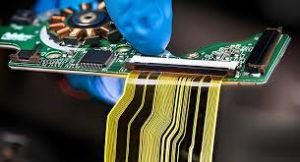What is the Lifespan of Flex Circuit PCBs?
Lifespan of Flex Circuit PCBs
Unlike their rigid counterparts, flex circuit PCBs are designed to be flexible and can be used in a variety of applications. They are also more resilient to harsh conditions such as temperature, moisture, chemicals, shock and vibration. They are used in medical, automotive and aerospace industries and can replace wired components to save space. This reduces weight, allows for more design flexibility and aligns with environmental sustainability.
The underlying material of a flex circuit pcb is the most important factor in its durability and enables it to handle repeated bending over a long lifespan. It is common to use polyimide as a base layer, since it is highly flexible, very tough and incredibly heat resistant. The conductive layers and protective solder mask are typically attached with thermally-cured acrylic adhesive. These materials are then covered with a surface finish, which can be either a dry film or liquid photo-imaged polymer. Stiffeners are sometimes added to relieve stress and balance the weight of the PCB, as well as improve abrasion resistance.
There are two main types of flex circuits; static and dynamic. A static board is one that will not bend or change shape over time, and is usually bent during the assembly process. A dynamic board will flex and change shape on a regular basis, and will need to withstand tens of thousands of bending cycles. To achieve these high levels of reliability, it is crucial to follow the right flex circuit design guidelines.

What is the Lifespan of Flex Circuit PCBs?
For example, a designer should be familiar with IPC rules to help make sure their PCBs are durable enough to withstand bending and abrasion. They should also consider the maximum amount of copper that can be added to a flex circuit, which is based on the type of conductors (pins, vias and traces) they are using. They should avoid creating multiple stress points in a flex circuit, such as stacked traces that may cause fractures. It is best to use gradual and large curved angles, and stagger the traces where possible to avoid stress points. It is also important to limit the number of pins, vias and plated through-holes that pass through bend areas.
A flex circuit can be designed with any layer stack that works with rigid PCBs, and it will accept both direct solders and crimped contacts. However, if the final product is going to be subjected to repeated bending and movement it is crucial to use higher grade rolled annealed copper foil. This will stretch more before fatigue cracking occurs and is stiffer in the z deflection direction, which is the key to a robust flex circuit.
A flex circuit is designed to withstand extreme temperatures, but it should not be placed in locations where it will be subjected to intense vibrations and shocks. This can damage the conductive copper and lead to shorts and failures. It is also a good idea to minimize the number of holes in a flex circuit, as this will further decrease its durability.